Full scheme of diagnosis of female infertility

It has been scientifically proven that practically every couple has enough time to determine the level of fertility in 12 months, provided that this couple lives a regular sex life.According to statistics, with systematic unprotected sexual acts, pregnancy occurs in the first 3 months in 30% of couples, during half a year - in 60% and 10% in the first year.
If after the expiration of the allotted period the pregnancy has not occurred - there is every reason to call a doctor.Complex examination with infertility is the most correct decision in this situation, as it will allow to determine the presence or absence of a cause that prevents the conceiving of the child.Optimum reference to a specialist should be carried out at the stage of birth planning, which will help to eliminate the possible risks of birth of infertile children( with congenital diseases and anomalies), complications in the process of gestation and childbirth.
Table of contents: When should I see a doctor?Female infertility: the stages of the survey The collection of anamnesis - the first stage of infertility diagnosis Inspection Special gynecological examination for suspected infertility Functional tests Required tests for infertility Instrumental and hardware diagnosis of infertility in women Surgical methods of examinationWhen should I see a doctor?
To think about a visit to a gynecologist for a woman who wants to become pregnant, she also has to have the following signs:
- hyperprolactinemia( increased prolactin level in the blood that causes a disorder of the menstrual cycle);
- a sharp decrease in body weight;
- complete absence of a menarche from a woman;
- excess weight;
- the hairline in the genital area is located by anomalous type( vertically directed, excessive, inadequate);
- underdevelopment of mammary glands;
- spontaneous miscarriages and miscarriage in history;
- no ovulation.
The above symptoms with infertility are quite common, so it's important to pay attention to them as early as possible.
Female infertility: stages of examination
We recommend to read: 
The diagnostic process in case of suspicion of infertility in the family should begin with an examination of the future pope.Infertility in men today occurs with the same frequency as in women.If the survey found no causal factors on the part of the husband, then they proceed to diagnose the woman.It includes many items, starting with a survey and ending, if necessary, with laparoscopy.
Anamnesis history - the first stage of infertility diagnosis
Consultation of a gynecologist is very important at the beginning of the infertility examination.It allows the doctor to assess the problem as a whole and to identify possible causes of infertility.
When assessing the patient's gynecological health, the doctor asks about it:
- Symptoms that are troubling( general health, duration of pregnancy, pain "before" and "during" menstrual periods, sudden weight loss or weight gain, discharge from the chest andOf the vagina).
- Family history( the presence of gynecological pathologies in the mother, relatives, age, Rh factor and her husband's health, bad habits).
- Case history( surgical interventions, infections, which the woman had previously suffered, trauma, gynecological and other diseases).
- Menstrual function( age of the first menarche, regularity, duration, painful menstruation, number of secretions).
- Sexual function( the onset of sexual activity, contraceptive methods used, the regularity of sexual intercourse, the number of marriages and partners, the level of libido, the presence of orgasm, discomfort during sex).
- Genital function( number of pregnancies and live children, spontaneous and induced abortions, previous pregnancies, complications in childbirth).
- The results of the examinations and treatments that were conducted earlier.
Inspection
 Objectively, the gynecologist evaluates the general condition of the patient :
Objectively, the gynecologist evaluates the general condition of the patient :
- body type;
- condition of mucous and skin;
- character of hairiness;
- development and condition of mammary glands.
He also palpatorically examines the thyroid gland, abdominal area, takes into account the figures of blood pressure and body temperature of a woman.
Special gynecological examination for suspected infertility
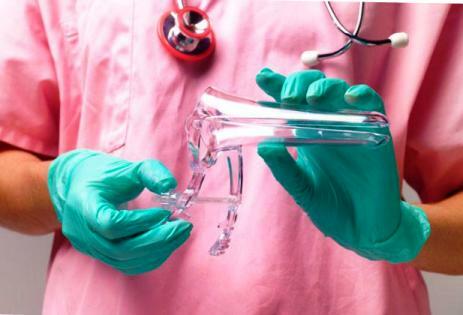 It is performed using gynecological mirrors on the chair.During the doctor's assessment, the doctor assesses the condition and degree of development of the genital organs( internal and external), the type of pubic hair on the pubis, the appearance of discharge and their character.The presence of abnormalities in the structure of the genital organs may be a symptom of infantilism and other congenital abnormalities of the reproductive system.
It is performed using gynecological mirrors on the chair.During the doctor's assessment, the doctor assesses the condition and degree of development of the genital organs( internal and external), the type of pubic hair on the pubis, the appearance of discharge and their character.The presence of abnormalities in the structure of the genital organs may be a symptom of infantilism and other congenital abnormalities of the reproductive system.
Excessive hairiness in the male type indicates problems of a hormonal nature.Allocations are a sign of an inflammatory or other pathological process in the vagina, which requires the appointment of additional tests to establish the pathogen.
Functional tests
Infertility examination also necessarily includes functional tests that allow you to obtain information about the nature of ovulation, the level of female hormones, the presence of antispermic bodies.
The following is used:
- Cervical index.This study reflects the quality of the mucus of the cervix, expressed in the point system.It estimates the level of estrogen saturation of the female body.
- Basal temperature.Based on the daily temperature measurement in the anus, a curve is constructed.Her analysis gives a picture of the monthly cycle, confirms the presence or absence of ovulation, ovarian activity.
- Postcoital test.It is performed for a more detailed study of the activity of spermatozoa in the mucus on the cervix.
Required tests for infertility
The most valuable in the informative plan studies are hormone levels for which a woman takes urine and blood.
For infertility diagnostics:
-
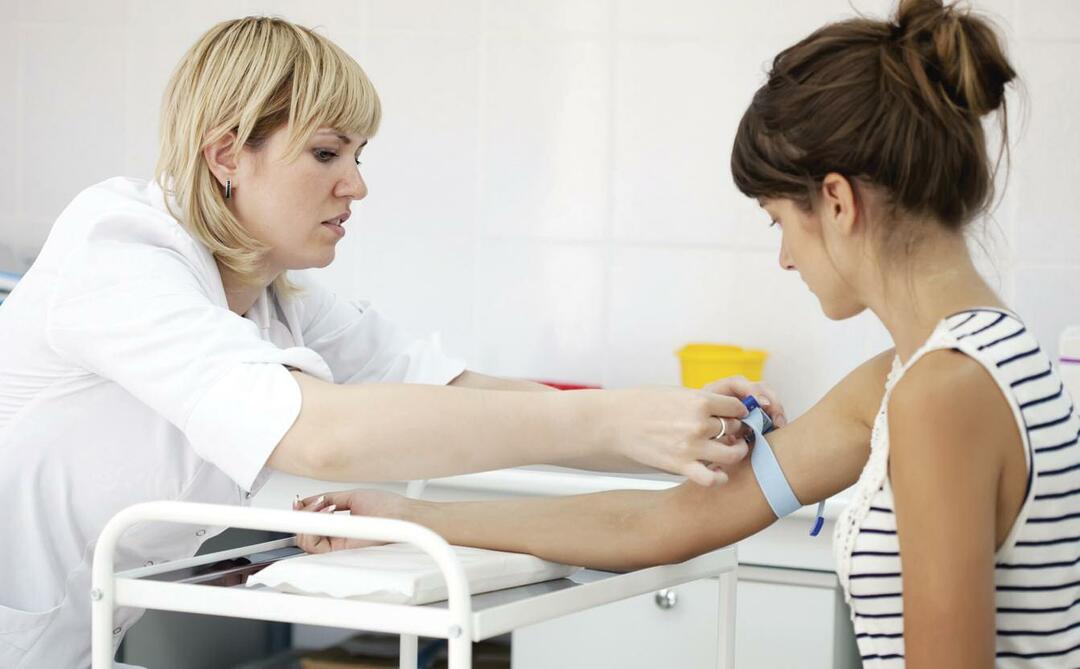 Screening for prolactin, luteinizing, follicle-stimulating hormone, estradiol.They are prescribed for violations of menstrual function.
Screening for prolactin, luteinizing, follicle-stimulating hormone, estradiol.They are prescribed for violations of menstrual function. - Analysis for thyroid hormones, testosterone, cortisol - their level in blood plasma is determined on the 5th-7th day of the cycle to determine their effect on the follicular phase.
- Urine analysis for hormones.To assess the work of the adrenal cortex in urine, the amount of 17-ketosteroids and DHEA-C is investigated.
- Assays for infections that are sexually transmitted.Given the presence of complaints and symptoms, the doctor may suspect the presence of various diseases, which are also often the cause of infertility.In particular, tests for cytomegalovirus, chlamydia, trichomonas, gonococcus, herpes virus, etc. can be prescribed.
- Study of the presence of antispermatics.When suspected of an infertility immune form, a woman is tested for antisperm antibodies, by taking material from the cervix and blood from the vein.
- Detection of the level of progesterone.It reflects the presence of ovulation and the work of the yellow body.This study should be conducted only on the 20-22 day of the monthly cycle.
Important : in all these studies are supposed to be carried out some time after gynecological examination and sexual intercourse, taking into account that the level of certain hormones can vary.
Instrumentation and hardware diagnosis of infertility in women
These survey methods include:
-
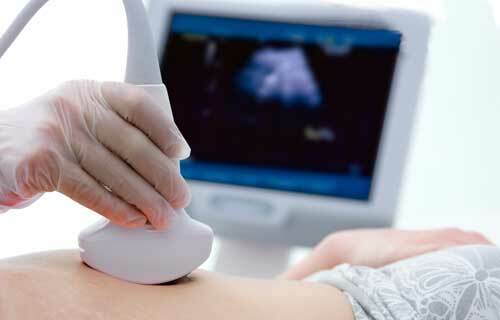 ultrasound.His task is to study the passage of the fallopian tubes.
ultrasound.His task is to study the passage of the fallopian tubes. - Colposcopy is a procedure for examining the vagina with a special optical device.During its implementation, the doctor examines the mucous membrane of the cervix for erosion, cervicitis and other pathological processes.
- Diagnostic scraping of the uterine cavity.It is appointed to assess the state of the endometrium at the histological level and its correspondence to the day of the cycle.
- Radiography of lungs, samples for tuberculosis.They are prescribed for the adhesion of tubes and intrauterine fusion, if there is a suspicion of tuberculosis.
- Hysterosalpingography is a procedure that involves examining the uterus and fallopian tubes using X-ray.It makes it possible to identify endometriosis, anomalies and defects in the development of the uterus, adhesions, tumor processes, fissures within the uterus, obstruction of the tubes - these processes most often cause infertility in women.
- Radiography of the Turkish saddle and skull.Conducted to exclude neuroendocrine diseases in terms of lesions of the pituitary gland with a broken menstrual cycle.
Surgical methods of examination
They are used if there is a uterine form of infertility.Surgical diagnostic technologies are very highly informative, and also low traumatic.
Most often this applies:
- Hysteroscopy is a procedure for examining the uterine cavity by means of an optical device that is inserted into the uterus through the outer cervical uterus.It is performed under general anesthesia in a hospital.The doctor can not only examine the condition of the uterus from the inside, but also to identify and immediately remove pathological formations( cysts, polyps).
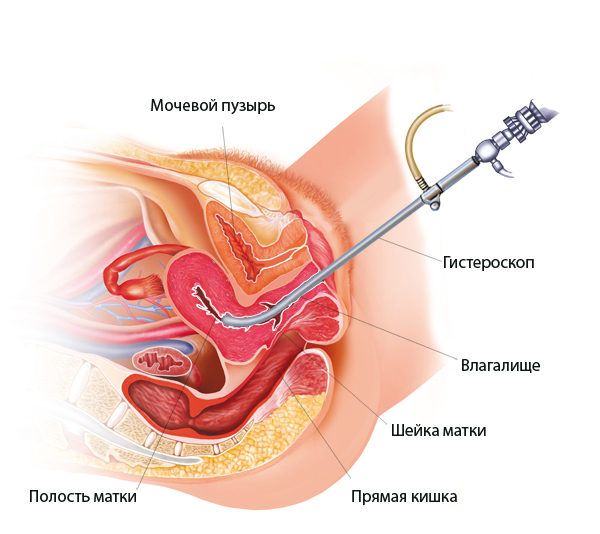
- Laparoscopy is an endoscopic examination of the pelvic organs.General anesthesia is also required for it.This is the most accurate way, which when infertility is prescribed with both a therapeutic and diagnostic purpose.
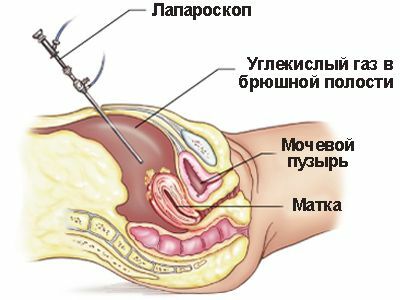
After a complete examination of a woman in 95% of cases, it is possible to establish the cause of infertility, and therefore choose an effective treatment.Modern technologies give a chance for the successful conception and bearing of a healthy child to virtually every childless couple.
More details on the causes and methods of infertility diagnosis in women are described in the video review:
Viktorova Julia, obstetrician-gynecologist.


